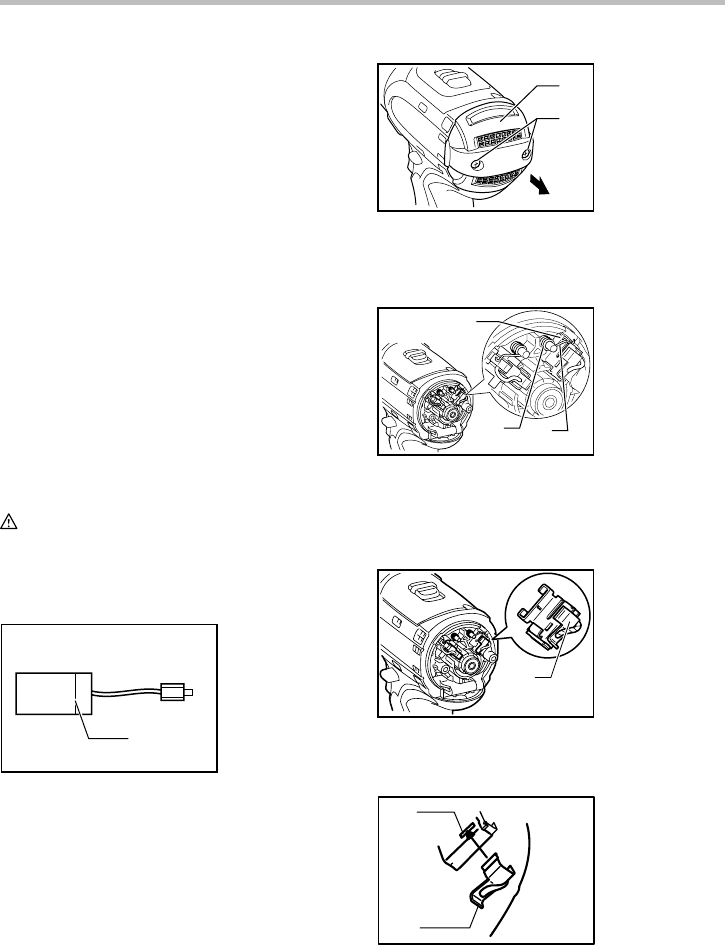
8
• A stuck bit can be removed simply by setting the
reversing switch to reverse rotation in order to back
out. However, the tool may back out abruptly if you
do not hold it firmly.
• Always secure small workpieces in a vise or similar
hold-down device.
• If the tool is operated continuously until the battery
cartridge has discharged, allow the tool to rest for
15 minutes before proceeding with a fresh battery.
Drilling in wood
When drilling in wood, the best results are obtained with
wood drills equipped with a guide screw. The guide
screw makes drilling easier by pulling the bit into the
workpiece.
Drilling in metal
To prevent the bit from slipping when starting a hole,
make an indentation with a center-punch and hammer at
the point to be drilled. Place the point of the bit in the
indentation and start drilling.
Use a cutting lubricant when drilling metals. The
exceptions are iron and brass which should be drilled
dry.
MAINTENANCE
CAUTION:
• Always be sure that the tool is switched off and the
battery cartridge is removed before attempting to
perform inspection or maintenance.
Replacing carbon brushes
1
006258
Replace when they wear down to the limit mark. Keep
the carbon brushes clean and free to slip in the holders.
Both carbon brushes should be replaced at the same
time. Use only identical carbon brushes.
Use a screwdriver to remove two screws then remove
the rear cover.
1
2
008355
Raise the arm part of the spring and then place it in the
recessed part of the housing with a slotted bit
screwdriver of slender shaft or the like.
1
2
3
007428
Use pliers to remove the carbon brush caps of the
carbon brushes. Take out the worn carbon brushes,
insert the new ones and replace the carbon brush caps
in reverse.
1
007429
Make sure that the carbon brush caps have fit into the
holes in brush holders securely.
1
2
006304
1. Hole
2. Carbon brush
cap
1. Carbon brush
cap
1. Recessed part
2. Spring
3. Arm
1. Rear cover
2. Screws
1. Limit mark


















